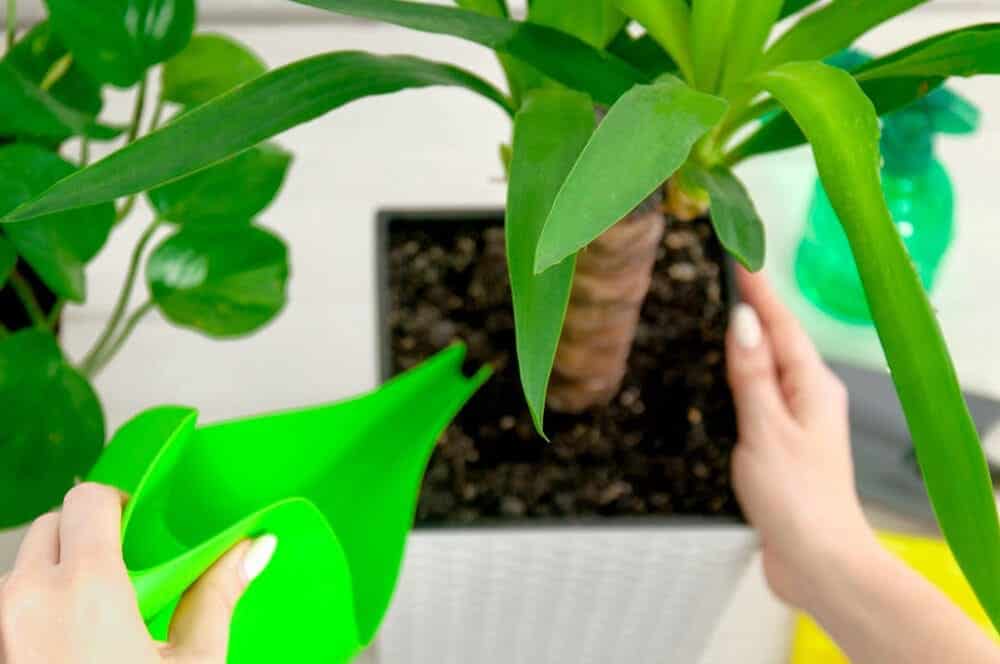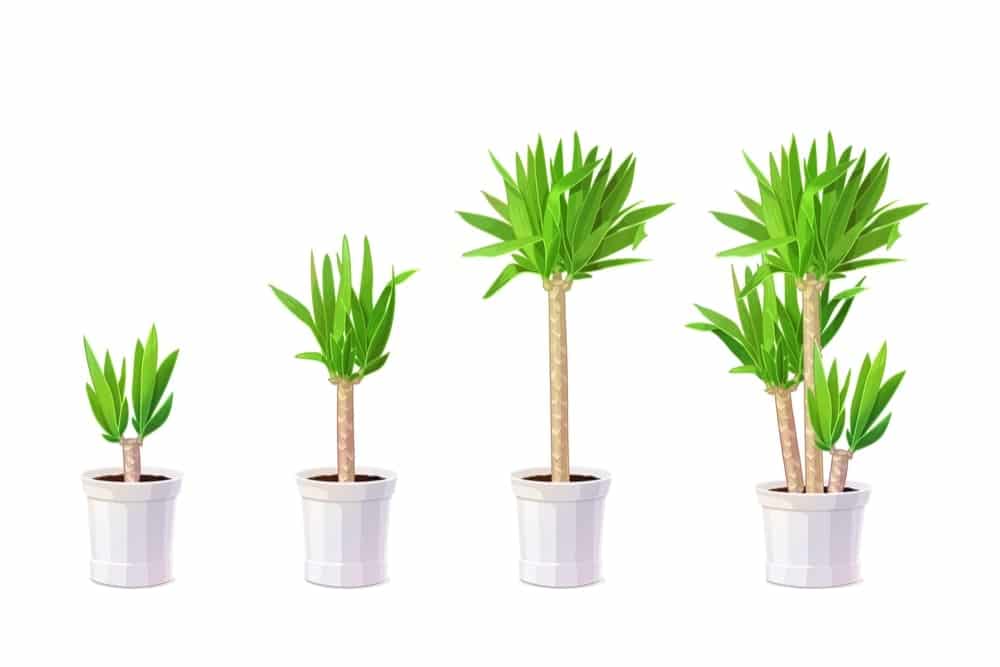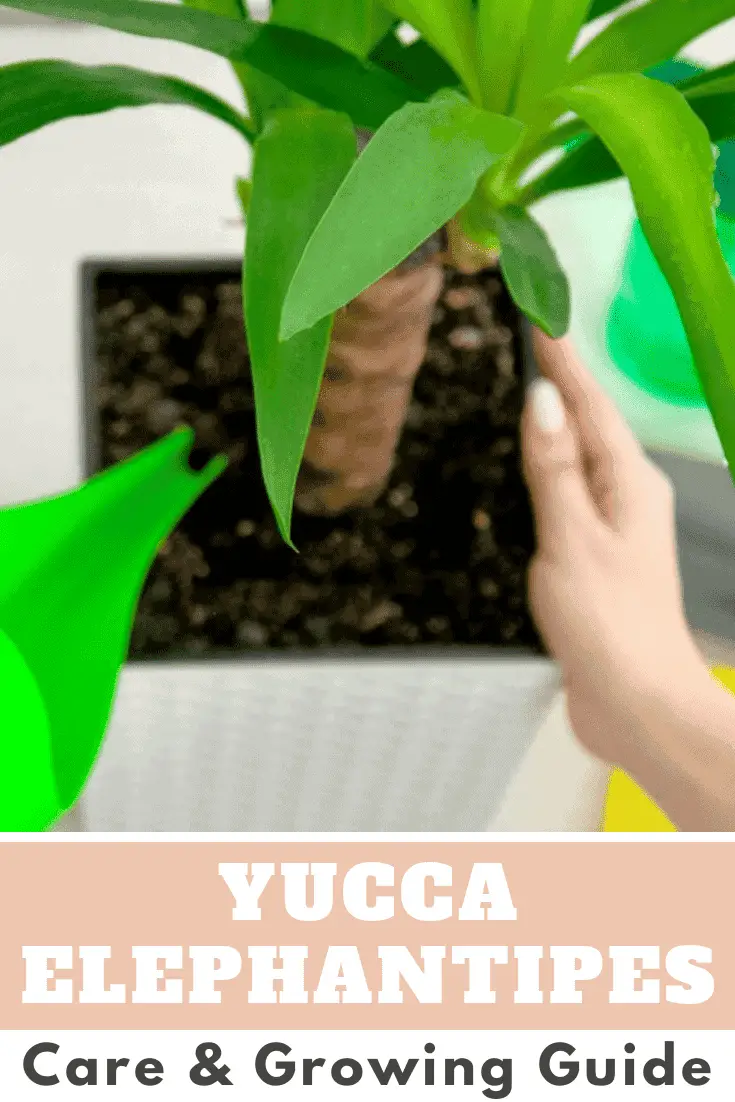This tree is known as the giant yucca, for a good reason.
It is very tall, and it towers over evergreen trees. Its trunk is big and sturdy. This plant is found all over South America and the Caribbean.
Yucca Elephantipes Care & Growing Guide
1. Light Requirement
Since the yucca is a desert plant, it needs several hours of direct sunlight a day if you are growing it outdoors. If it’s growing indoors, it can be in partial shade for a small amount of time but placing it in full indirect light helps the leaves’ colors develop better.
2. Water
Since the yucca plant is tolerant to droughts and long periods of no water, you should not have to water it too often. From the spring to the fall, keep the soil slightly moist, but when winter comes, water it less.
3. Climate and temperature
Whether it is indoors or outdoors, the yucca plant can handle temperatures between 30 and 90F. Also, it does well with a bit of humidity, but the leaves don’t need to be misted. It’s used to dry, hot temperatures, so it should last in many hardiness zones. But it does best in zones 10 to 12.
4. Soil
Because this plant is so wild and big, the soil needs to be compact enough to keep it standing. The yucca plant can survive in low-quality soil, but the nutrition in the soil can be boosted by adding fertilizer to it. If this plant is in a container, add peat to improve the soil’s drainage. Also, the soil around it shouldn’t be acidic. It should be from neutral to highly alkaline.

5. How to repot the yucca
The yucca plant likes its roots to be crowded so it doesn’t need to be repotted it for a long time, even if it keeps growing. When you see the roots growing out of the drainage hole, then it’s time to finally repot it, Another sign it is time for repotting is if the water runs right through the pot without delay. That means the roots are too long and there is not enough soil.
When you repot the yucca, carefully remove it from its current pot and try to loosen the roots. When the roots are loose enough, place the plant on top of the soil in the new container, and slowly fill up the rest of the container with more soil. Press down and shake it to remove air pockets. Then water it until the excess water comes out from the bottom.
6. Speed of Growth
If it’s exposed to enough sunlight and the soil stays fertile, the yucca plant can grow around two feet per year. If the plant is outdoors, it can grow to about two and a half feet per year.
7. Height and Width of the Yucca plant
The Yucca is a big plant. If it’s outdoors, it can easily grow up to 20 feet in 10 years. Its width is about 15 ft depending on how far its leaves extend. If the plant is indoors, you can control its height and width by trimming it. People who have this plant in their homes usually let them grow to 5 feet tall.
8. Trimming
To trim down a yucca plant, the entire tree must be cut in half. Remove the tree from its pot, lay it down on the floor, and find the halfway point between the beginning of the stem and the top of the stem. Then cut the plant in half. Once that’s done, place the bottom half back into its original pot and add fertilizer and extra soil. Continue to care for it as usual, and slowly, new leaves will appear from the cut top.

How do I propagate the Yucca plant?
The yucca plant can be propagated by digging up the soil and finding its offset growth. These offset plants are attached to the root ball and must be removed gently, as not to destroy the new plant or main plant. Once you have the new plant, dip the roots in root hormone to promote development. Then you bury it up to where the roots ends and the stem begins.
Is the Yucca plant poisonous?
Yes, the yucca plant is slightly poisonous to both humans and pets. The poison is found in the sap of the yucca plant, which has saponins. If it touches your skin, you may get a rash. However, throughout history, the yucca plant has been consumed by humans after they cook it. The stems, leaves, and tree base are all edible if they are cooked.
Can the Yucca plant grow in water?
No, the yucca plant cannot grow in water. It is a desert plant and it does not like being over-watered.
Does the Yucca plant have flowers and how to get it to flower?
The yucca plant does have flowers. It flowers once a year, from summer to early fall—some other types of yuccas flower from June to August. Once a yucca plant blooms for its first time, that part of the year will be the only time it’s flower blooms in the following years. It is rare for a yucca plant to bloom its flower indoors. If the yucca is outdoors, you will see a tall white flower in between the clusters of leaves.
Common Diseases
Scale pests are common pests to the yucca. A few scales are not a cause to worry but they can quickly build up to an infestation. If scale insects attack a yucca for long enough, they may slow down its growth rate. Its leaves green color will fade and dull. Then the branches will weaken.
To get rid of scale insects, first, take a hose and wash off as many scales as possible. Remember to cut off any dead or infected leaves and branches. Then, apply insecticidal soap to the plant and repeat this process until the scales are gone.
Gray Leaf spots occur on old leaves and leaves that are very weak. It is a fungus so it can spread to other leaves. When this happens, remove all infected leaves and spray a fungicide on to the rest of the plant.
Similar post: Sansevieria Moonshine Care & Growing Guide
Conclusion
- Outdoors, this plant can grow to 20 feet tall
- The soil must be moist, but not wet.
- You can trim the yucca by cutting it in half.
- It should be fertilized during the spring and summer
- It can grow about two to three feet a year.
- It needs full sunlight every day if it is an outdoor plant.
- If it’s indoors, then full indirect sunlight is best.

Victoria is the owner and main author of hobby plants. She loves spending her free time in her garden planting and taking care of her plants. Victoria hopes you enjoy the content here!